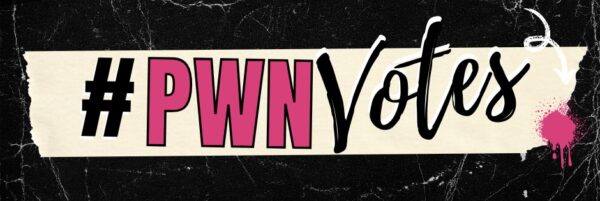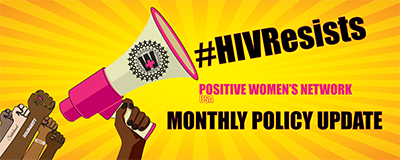General Election Resources
It’s Election Season! Here are some things to know before you go to the polls!
Each state requires a person to be registered as a voter. - If no, register to vote at www.Vote411.org/register!
- If yes, it is still important to check your voter registration status to ensure that you are registered to vote and that your voter information is accurate.
- If your legal name or address (in-state move) has changed you will need to update your voter registration to match your Voter ID (if necessary).
- If you have moved to another state, you will need to register to vote in that state.
- It is important, especially this election season, to check that you are still registered to vote to ensure you have not been impacted by the illegal voter roll purging, in violation of the National Voter Registration Act, that has been occurring across the United States. Some states, such as Virginia, have been improperly removing eligible voters from their rolls – especially those with naturalized U.S. citizenship.
- You may still be able to vote if you have a felony! In some states, voters with felony convictions are not allowed to vote. Check here to see if you are eligible to vote in your state with a felony conviction and to determine how, if possible, to restore your voting rights!
- Encourage your people to register! Make sure the newly eligible (18+) young people in your life are registered to vote! Also make sure that your elders are registered to vote!
You can check your voter registration status, update your registration, and register to vote, online here.
There are several different ways that you can cast your ballot this election season!- In-person voting: This method is the traditional method of voting. Election Day is November 5, 2024 and polling times vary by state. Be sure to take note of your polling place operating hours!
- Early voting: This method allows you to vote in person prior to Election Day. Use this map to indicate whether your state allows early in-person voting as well as operating hours for early voting poll places!
- Mail-in voting: Some states allow voters to vote by mail or drop off their ballots if they are unable to vote in person. Once you have casted your mail-in ballot, track it! Many states allow you to track your ballot – check your state Secretary of State website!
You can check whether your state allows mail-in or absentee voting, here.
Your polling location is based on your current address.- If yes, it is still important to check that your polling location has not changed since the last time that you voted.
- If no, you can find out where your polling place is, here. Be sure to also note the time of your polling place operating hours!
While many states do not require any form of identification to vote, some states require Voter ID to vote in-person. Make sure to find out what is required in your state so that you are properly prepared to head to the polls!- Transgender and gender non-conforming voters: If ID is needed in your state, make sure your name and address on your voter registration matches your name and address on your ID by the election. But don’t worry if your gender identity or gender presentation doesn’t match your name, photo, or gender marker, as that is not required by law. For more information, including information for poll workers and election officials if you encounter issues, click here.
- Assistance for people with disabilities: If you are in need of assistance registering to vote, getting to the polls or casting your ballot, request assistance from your state’s
Do you know what’s on your ballot? Vote all the way down your ballot with confidence!
PWN is a nonpartisan organization, which means we will never tell you who to vote for or which party to vote with. There is also a lot at stake for women living with HIV this election. From protecting healthcare, to LGBTQ+ issues, to reproductive freedom, to racial justice, to the decarceration of communities most impacted by HIV – whatever your core issues are, there’s information out there to help you vote your values.
See what’s at stake for…
With the AIDS United’s Election Center, learn how your vote can support ending the HIV epidemic, protecting HIV infrastructure, and improving quality of life for people living with HIV. With the Kaiser Family Foundation’s Candidate Comparison Tool, compare the presidential candidates’ stances on healthcare policy, including Medicaid, Medicare, abortion, maternity care, contraceptives, LGBTQ health, immigrant health, prescription drug prices, and global health. With the United We Rise’s Black Voter Guide, learn how your vote can help ensure that every Black person has equitable access to the opportunities and resources needed for a healthy, joyful, and liberated life.
Great! You’re ready to hit the polls! Here are some do’s and don’ts to be aware of!
Prior to Election Day, make sure you have a plan to get to the polls! - Carpool: Take your friends and family to vote with you!
- Rideshare: Some rideshare services (Lyft, for example) will be offering free and discounted rides to the polls! Sometimes, traditional taxi services offer free or discounted rides to the polls on Election Day as well – inquire with your local taxi company.
- Medical transportation: If you utilize a medical ride service, call them and check if they are provided extending services for Election Day! In the past, some companies have arranged rides to the polls for their customers!
- Community rides: Some local businesses and establishments (churches for example) may also be arranging rides to the polls! Check around your area and be sure to help spread the word!
- For example, in Louisiana the Power Coalition is offering an online ride booking opportunity! Click here to request a ride or to volunteer to give a ride to the polls during early voting and/or Election Day!
Electioneering is the act of influencing someone to vote for a particular party, candidate or position on an issue within 100ft of the polling place. This includes speaking with voters, handing out persuasive information, and holding political signage. Voters may also be turned away by poll workers if they have on clothing or accessories endorsing a particular party or candidate.
- Know your rights! As a U.S. Citizen, you have the right to vote! Make sure that you are aware of how to resist voter intimidation, access accommodations for disability or language assistance, and how to report issues!
- Stay in line! If the polls close while you’re still in line, stay in line! You have the right to still vote!
- Ask for a new ballot! If you make a mistake on your ballot, you are allowed to request a new one
- Cast your vote regardless!
- Paper ballots: If the polling machines are down at your polling location, ask for a paper ballot.
- Provisional ballots: If a poll worker is unable to find you in the voting registry, you are entitled to a provisional ballot. This ballot will be investigated after Election Day by election officials and if you are found registered and qualified to vote, your provisional ballot will be counted.
- Before asking for a provisional ballot, make sure to double check with your poll worker that your name is not on the voter registry. Also make sure that you are at the proper polling location
- If you are denied a provisional ballot, please report!
- Accessibility is required! Under federal law, all polling locations must be in full compliance with Americans with Disabilities Act (ADA) accessibility requirements. Polling places must also accommodate folks who speak English less than “very well.”
- Access to the polls: If you are experiencing an issue getting into or around your polling place due to your need for mobility assistance, ask a poll worker for curbside assistance. If that is not provided to you, please report!
- Assistance at the polls: under federal law, any voters who have difficulty reading or writing English can receive assistance at the polls from the person of their choice so long as that person is not the voter’s employer or an agent of the voter’s union.
If you run into any problems on Election Day, call the Election Protection Hotline at 1-866-OUR-VOTE (1-866-687-8683). For Spanish, call 1-888-VE-Y-VOTA (1-866-839-8682)COVID-19 is still around and it is also flu season! Make sure you are prepared at the polls! Wear a mask and carry/use hand sanitizer before and after you vote!
There are peak hours on Election Day! To make sure you don’t have to wait too long in line, try visiting the polls during off-peak hours! Typically, polls are busiest in the early morning, lunch time, and again around mid evening. - Ask for assistance! If you feel that you are having difficulty standing in line, please speak with a poll worker and ask for assistance.
- Be prepared! In case there are long lines, be sure to bring water and snacks with you to hold you over.
- Stay in line! So long as you are in line before the poll closing time, you are allowed to vote!
You’re ready to cast your vote and make your voice heard! Let’s do a final safety check.
Here at PWN we know that we keep each other safe, it’s up to us! From voter intimidation at the polls to COVID-19, check out this list of safety tips so you’re ready for anything.
Don’t miss the #HIVResists Monthly Policy Update!
It’s hard to keep track of all the policy news happening every day, that’s why PWN’s policy team puts together a monthly compilation of the top stories on the policies that affect your every day life! It’s called the #HIVResists Monthly Policy Update and the September 2024 edition is all about this year’s elections. Read all about it and become an expert—knowledge is power!




